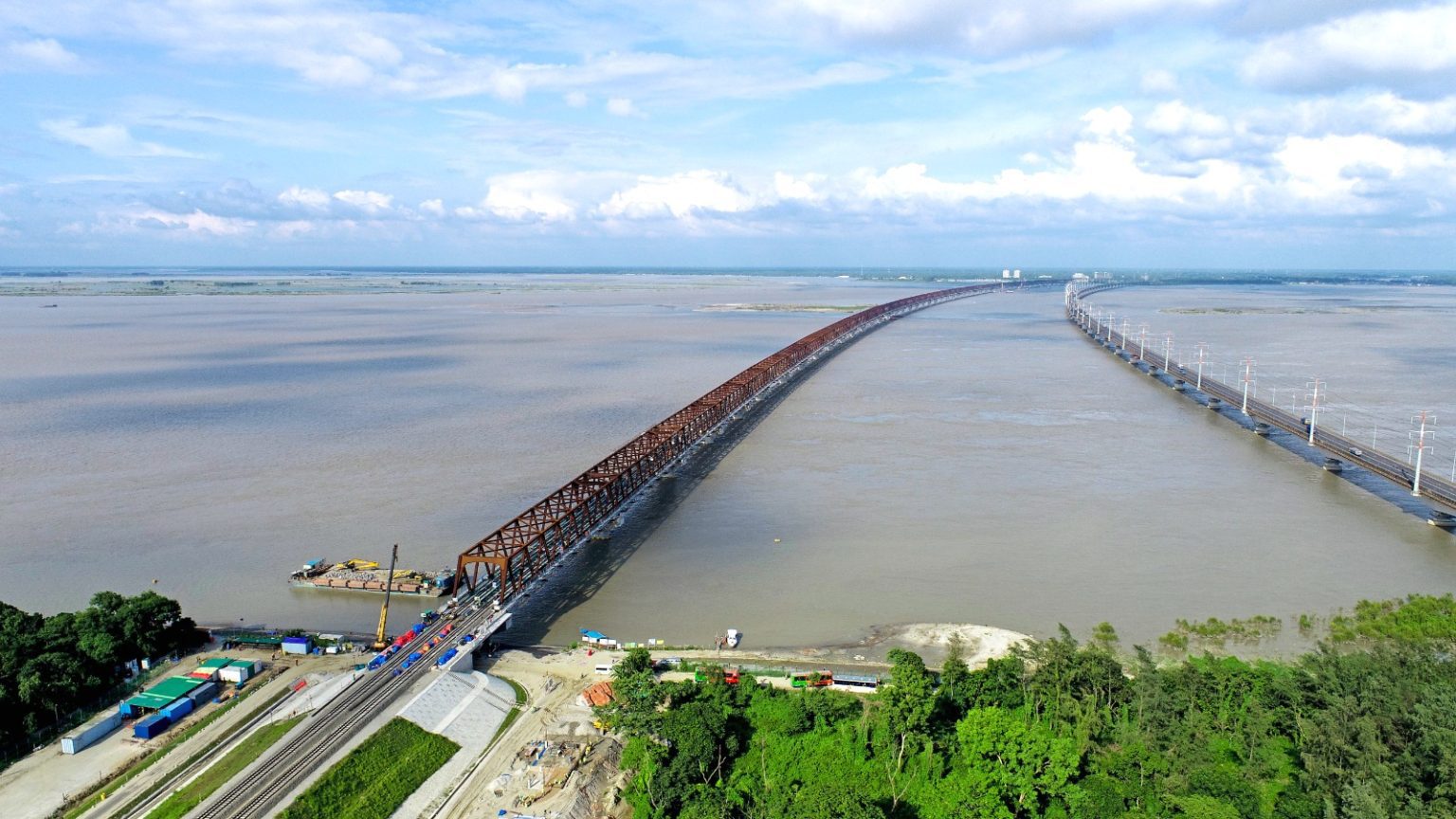The authorities are set to formally inaugurate the country’s largest railway bridge over the Jamuna River for passenger train operations on Tuesday, officials said. However, the installation of a modern signaling system is yet to be completed.
Secretary of the Ministry of Railways, Fahimul Islam, will officially inaugurate train operations at Soydabad station (on the western side of the river) in a simple ceremony at 11:35 AM, a railway official told Times of Bangladesh.
Once fully operational, the new railway bridge will significantly ease travel for tens of thousands of passengers between the capital, Dhaka, and northern districts.
Currently, rail traffic is heavily dependent on the existing railway bridge along the Jamuna Multipurpose Bridge, which allows only a limited number of trains to operate.
Installation of the modern signaling system would take at least another three months. Until then, train operations will rely on a manual system, ensuring smooth movement, according to Al Fattah Md. Masudur Rahman, Project Director of the Jamuna Railway Bridge.
Although the official inauguration has not yet taken place, commercial passenger train operations have already begun. The bridge construction was completed in 2024.
The total project cost amounted to Tk 16,780.95 crore, with Tk 12,149 crore provided by the Japan International Cooperation Agency (JICA) to finance the main bridge and supporting infrastructure.
Passenger trains began using the new route on January 12, when the Silk City Express traveled from Rajshahi to Dhaka via the new Jamuna Bridge track. Since then, other trains have been regularly using this route.
Following the inauguration, trains will operate on both tracks of the bridge. However, no grand ceremony is planned for the occasion.
When asked about the incomplete signaling system, Railway Ministry Adviser Fawzul Kabir Khan told Times of Bangladesh that he was unaware of the issue, as no officials had informed him. He noted that there were no problems during trial runs.
He also said that he would not be attending the inauguration, citing the absence of a senior JICA official who was initially scheduled to be a guest.
According to Project Director Al Fattah Md. Masudur Rahman, the project has introduced a total of 30.73 kilometers of railway tracks, including: 4.80 km of main railway bridge, 0.05 km of viaducts (elevated sections) on both ends, 7.67 km of railway approach embankments, additional loop and siding tracks.
Bangladesh’s railway system is divided into two regions by the Jamuna River: The eastern region (covering Dhaka, Chattogram, and surrounding areas) mainly operates meter-gauge trains, which are smaller and run on narrower tracks.
The western region (including Rajshahi and Khulna) primarily uses broad-gauge trains, which require wider tracks.
The existing Jamuna railway bridge has a single track, limiting train speed and causing delays, as only one train can cross at a time.
The new dual-gauge, double-track bridge will allow both broad-gauge and meter-gauge trains to operate, ensuring continuous train movement without delays.
Despite these improvements, transportation expert Mohammad Hadiuzzaman of BUET told Times of Bangladesh that the new bridge alone may not fully resolve railway capacity issues. The fundamental difference in track standards between the two regions remains a challenge.
He emphasized the need for a long-term plan to expand broad-gauge tracks in the eastern region.
A railway official, speaking anonymously, said that while the dual-gauge, double-track bridge is a major advancement, the single-line railway between Ishwardi and Joydebpur remains a bottleneck. Until this section is converted to a double track, the full benefits of the new bridge cannot be realized.
Currently, trains take 40 to 45 minutes to cross the existing Jamuna railway bridge. With the new bridge, this time will be reduced to just 2.5 minutes for the 4.80-kilometer crossing.
The bridge design allows broad-gauge trains to travel at speeds of up to 120 km/h while Meter-gauge trains to travel at speeds of up to 100 km/h. The expected average operating speed is 80 km/h
Previously, 38 trains operated daily on the old bridge. The new bridge was designed to accommodate 88 trains per day, but due to ongoing infrastructure limitations, only 52 trains will initially run.


